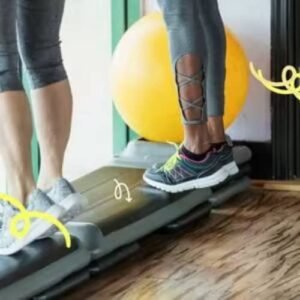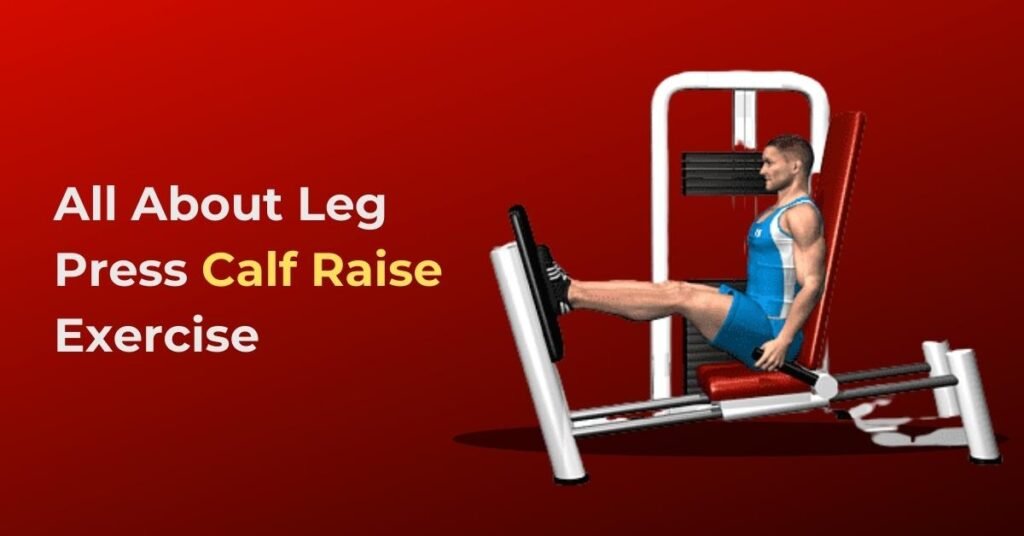All About Leg Press Calf Raise You may not always think about your calf muscles, but use them daily when standing or walking. They are essential for complete balance and stability of the ankles, so having a solid calf can help you exercise (or walk across the road) more effectively without worrying about injuring yourself.
Even if a lot of exercise uses your calves, the calf raise can lift the calves’ muscle group, and the benefits extend to the other parts of your lower legs.
Of course, the correct form is essential in extending any exercise. We gathered information from a few experts about how to do a calf raise properly, the benefits of exercise, and how to adjust them according to your needs.

What Are Calf Raises?
Leg press calf raise is an exercise of the lower leg that strengthens the calves and the other muscles near the ankle. Our leg press calf muscle consists of two muscles, explains Jonathan Tylicki.
“The main calf muscle is the gastrocnemius, which is present in the upper part meaty part of the calf and controls the flexion of the foot and knee.
The soleus is another muscle-building muscle, which is the deep muscle that controls the flexion of the foot,” he said.
The calf raises help flex and move the calf and is best performed with the entire movement, adds Mike Thomson, a certified personal trainer and running trainer at Life Time Overland Park.
There are many different types to try: You can do it with a straight or curved knee, using tools – dumbbells, a leg press machine, a standing calf machine, a sitting calf lift machine, or a step, and many others.
However, don’t forget that no matter how you exercise, calves are genetically engineered and have significant differences in their structure, says Johry Batt, head of athletics at F45.
He says there are two types of calves:
Long calf: The tibia and fibula are equally short, and the gastrocnemius and soleus are large and very low.
Short calf: The calf muscle is short, thin, and high with a long muscle.
What Are the Benefits of the Leg Press Calf Raises?

Training your calves is essential due to the wide use of those muscles, including walking, running, jumping, and moving your body during active movement. “Your calves are a group of powerful and strong muscles that push you forward and lift your whole body several times a day as you walk,” says Batt.
“Training your calves is essential in building calf strength, endurance, and agility. Excellent for improving ankle stability and overall balance. Calf raise is also excellent for stretching and flexing the plantar muscles, eventually making them flexible.”
In addition to the calf muscles, the benefits of lifting the calf extend to other parts of your leg. If done right, you can have a strong Achilles tendon, says Thomson. It can also help to strengthen the small muscles around the ankle and knees, says Tylicki.
Most people are safe to raise a calf unless they have injured a calf or an ankle. However, “the calf raise and strengthening the balance muscles around the ankle is very important to prevent injury,” Tylicki said.
“Having strong calves helps the body to perform plyometric and strength exercises properly, as the main muscles begin to absorb the impact of the calf’s landing.”
How to Perform 45-degree Leg Press Calf Raise?
- Load the machine to the desired weight.
- Then sit on the chair.
- Now place your feet on the sled in an area that reaches the shoulder.
- Take deep breaths, and stretch your legs, but keep safe objects closed (if possible).
- Now place your feet on the floor and let the heels hang down.
- Lower the heels by dorsiflexing the ankles until the calves are fully stretched.
- Push the weight back to the initial position by extending the ankles and bending the calves.
- Repeat with the desired number of repetitions.
How Does Perform Seated Calf Raise?
- Start by sitting down on the leg press machine.
- Now place and rest your feet where your toes are resting at the end of the platform.
- Then push the platform as far as possible while sticking your feet against it.
- Lastly, slowly return to your initial position.
How to Perform Standing Calf Raise?

- Begin the exercise by standing on the edge of a step or a step-aerobics platform.
- Now carefully place the two sets of risers below the platform.
- Make sure you are standing straight in a position where your abdominals are pulled in.
- Appropriately place your leg’s balls on the step, and your heels hang above the edge.
- Slowly raise your heels (a few inches) over the edge, and you should be standing on your tiptoes.
- Pause for a while in that position.
- Then gently lower your heels beneath the platform, and you should feel a little stretch in the calf muscles.
How Many Calf Raise Repetitions Can You Perform?
Repetitions can vary depending on the weight you add, but Batt says good results are achieved with more extended sets until you feel new, thus with higher repetition. You suggest doing 15-30 reps per set and adding calf tests to your performance twice or thrice a week. “Raising a calf is an all-encompassing task, so I do not intend to combine it with other low-level supersets or as a conclusion at the end of your workout,” he says.
Make sure to check out our other leg exercise articles on the leg press and hamstring curls.



